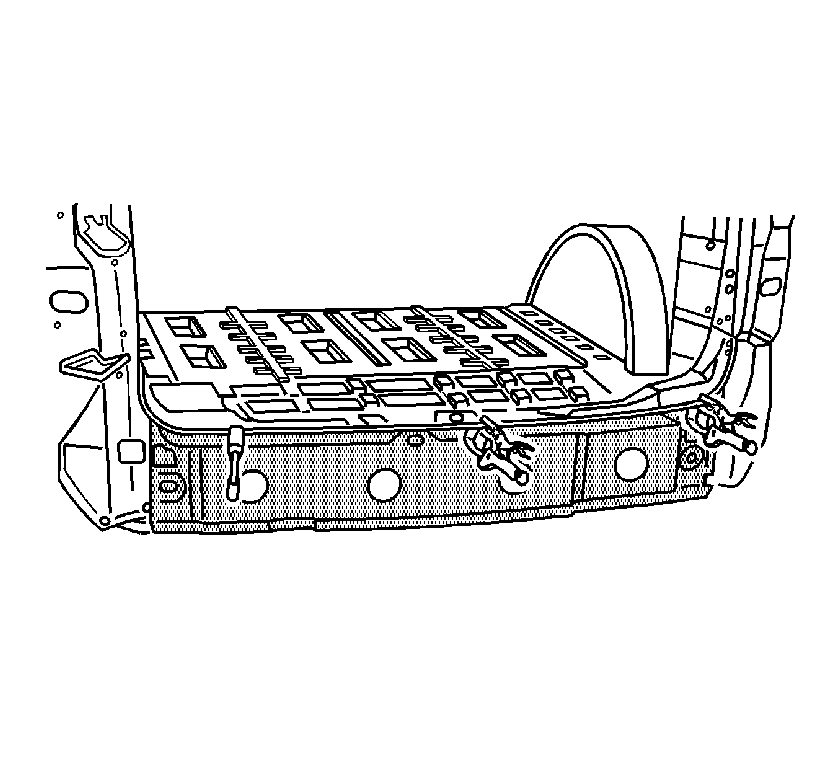Description
This repair procedure gives you the option of using an installation procedure for either metal-inert gas (MIG) welding or adhesive bonding. The choice of installation depends on the type of application requirements. The adhesive bonding procedure may also require MIG welding in some areas of the repair.
Removal Procedure
- Disconnect the negative battery cable. Refer to Battery Negative Cable Disconnection and Connection in Engine Electrical.
- Disable the SIR system. Refer to SIR Disabling and Enabling in SIR.
- Restore as much of the damage as possible to factory specifications. Refer to Dimensions - Body .
- Remove all related panels and components.
- Note the location and remove the sealers and anti-corrosion materials from the repair area, as necessary. Refer to Anti-Corrosion Treatment and Repair in Paint/Coatings.
- Locate and drill out all factory welds. Note the number and location of welds for installation of the rear body opening right and left lower reinforcements, gaining access to the rear floor panel.
- Remove the rear end panel.
Caution: Refer to Approved Equipment for Collision Repair Caution in the Preface section.
Important: Before beginning the repair, refer to Metal Panel Bonding for proper adhesive preparations and general information.
Caution: Refer to Foam Sound Deadeners Caution in the Preface section.
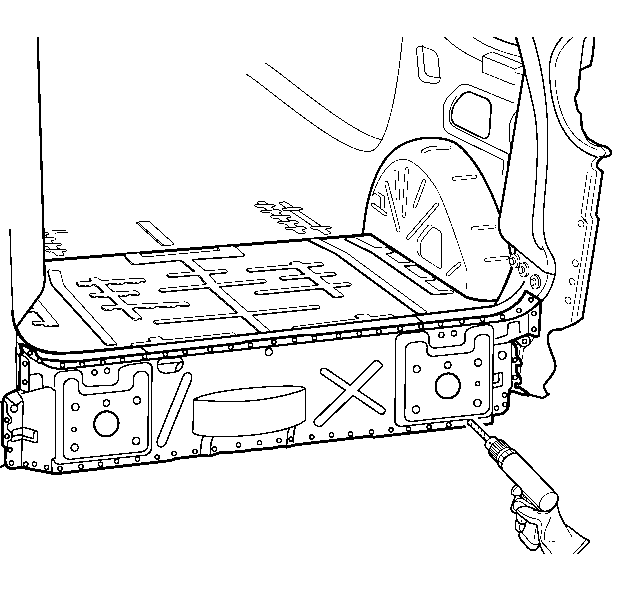
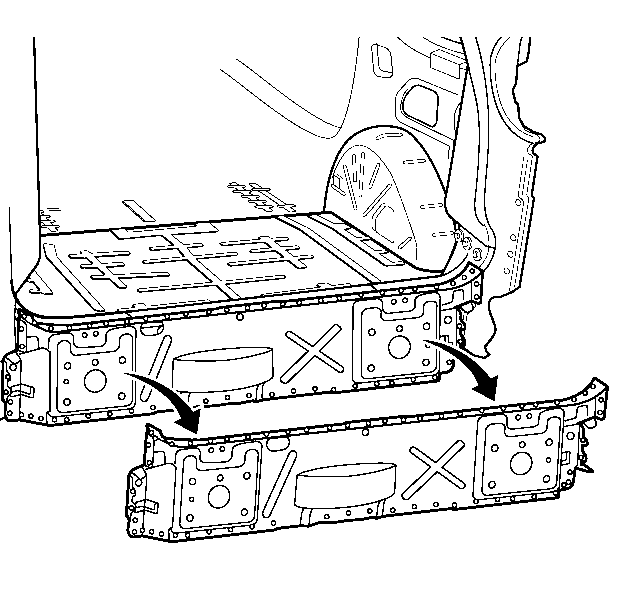
Installation Procedure (Metal-Inert Gas (MIG) Welding)
- Drill 8 mm (5/16 in) plug weld holes, as necessary, in locations noted from the original rear end panel.
- Prepare all mating surfaces, as necessary.
- Apply 3M® Weld-Thru coating P/N 05916 or equivalent to all mating surfaces.
- Position the rear end panel to the body.
- Plug weld accordingly.
- Clean and prepare all of the welded surfaces.
- Apply the sealers and anti-corrosion materials to the repair area, as necessary. Refer to Anti-Corrosion Treatment and Repair in Paint/Coatings.
- Paint and repair the area. Refer to Basecoat/Clearcoat Paint Systems in Paint/Coatings.
- Install all related panels and components.
- Enable the SIR system. Refer to SIR Disabling and Enabling in SIR.
- Connect the negative battery cable. Refer to Battery Negative Cable Disconnection and Connection in Engine Electrical.

Important: If the location of the original plug weld holes can not be determined, or if structural weld-thru adhesive is present, space the plug weld holes every 40 mm (1½ in) apart.
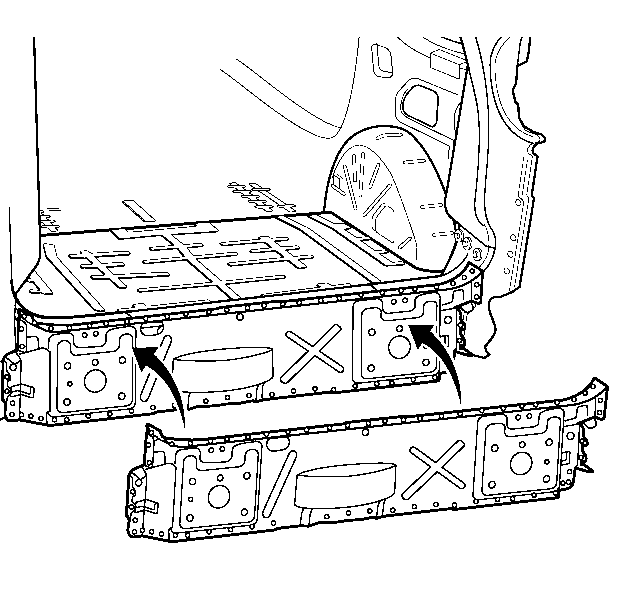
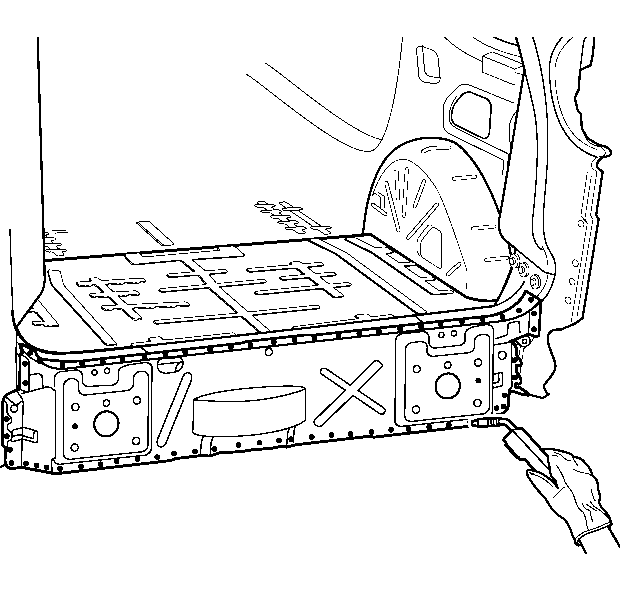
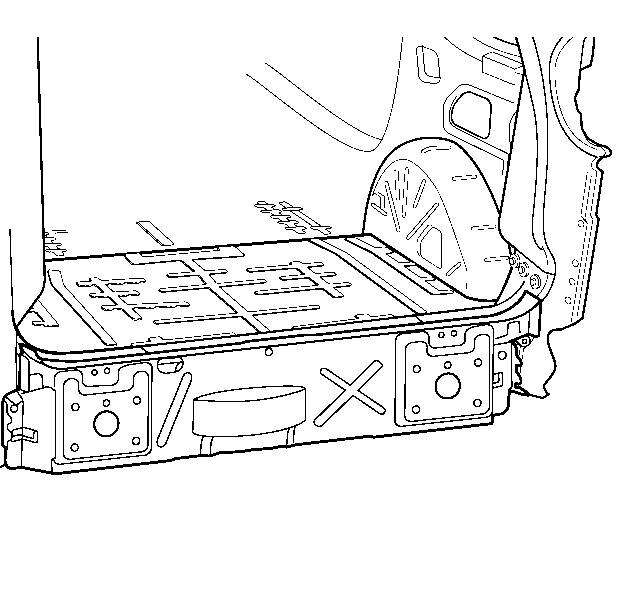
Installation Procedure (Adhesive Bonding)
- Grind the surface of the body mating flanges to bare steel.
- Grind the rear end panel mating flanges to remove the E-coating. Take care not to damage the corners or thin the metal during the grinding operation.
- Clean the mating surfaces.
- Apply a 3-6 mm (1/8-¼ in) bead of metal panel bonding adhesive GM P/N 12378566/7 (Canadian P/N 88901674/5) or equivalent to both of the mating surfaces.
- Using a small acid brush, spread a coat of adhesive to cover all the bare metal surfaces to ensure corrosion protection.
- Apply a 9-13 mm (3/8-½ in) bead of metal panel bonding adhesive GM P/N 12378566/7 (Canadian P/N 88901674/5) or equivalent to the service part mating surfaces.
- Install the rear end panel to the body.
- Clamp the rear end panel into position, as required.
- Using lacquer thinner, remove the excess adhesive from the rear end panel area.
- Apply the sealers and anti-corrosion materials to the repair area, as necessary. Refer to Anti-Corrosion Treatment and Repair in Paint/Coatings.
- Paint and repair the area. Refer to Basecoat/Clearcoat Paint Systems in Paint/Coatings.
- Install all related panels and components.
- Enable the SIR system. Refer to SIR Disabling and Enabling in SIR.
- Connect the negative battery cable. Refer to Battery Negative Cable Disconnection and Connection in Engine Electrical.
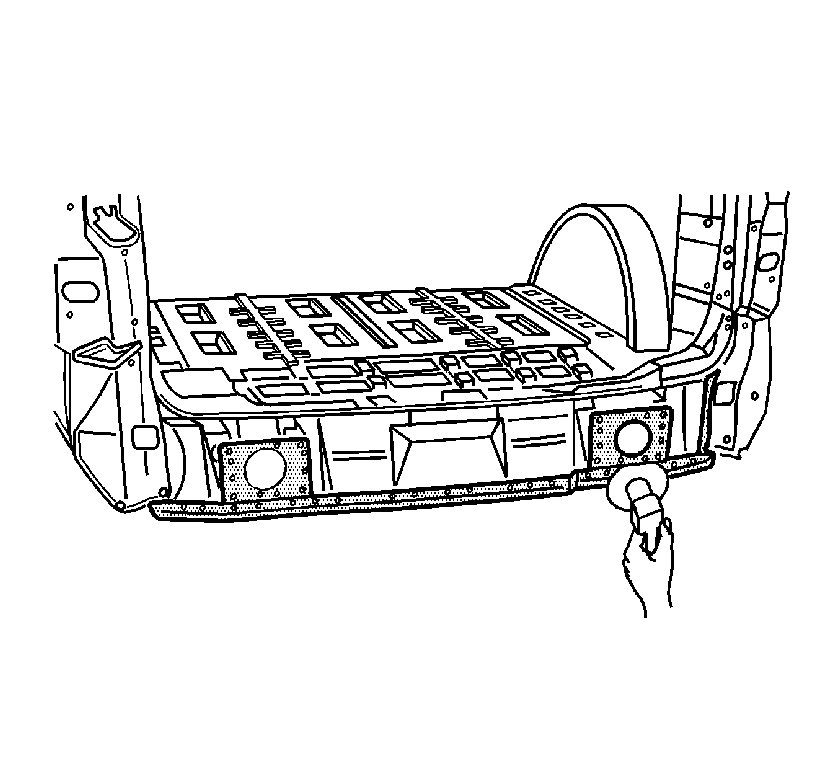
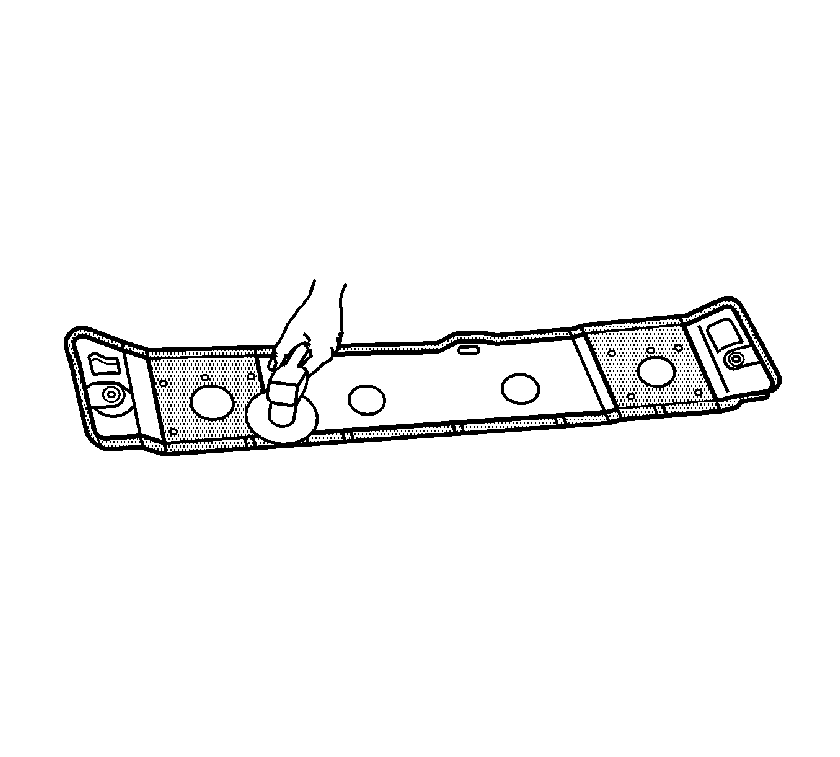
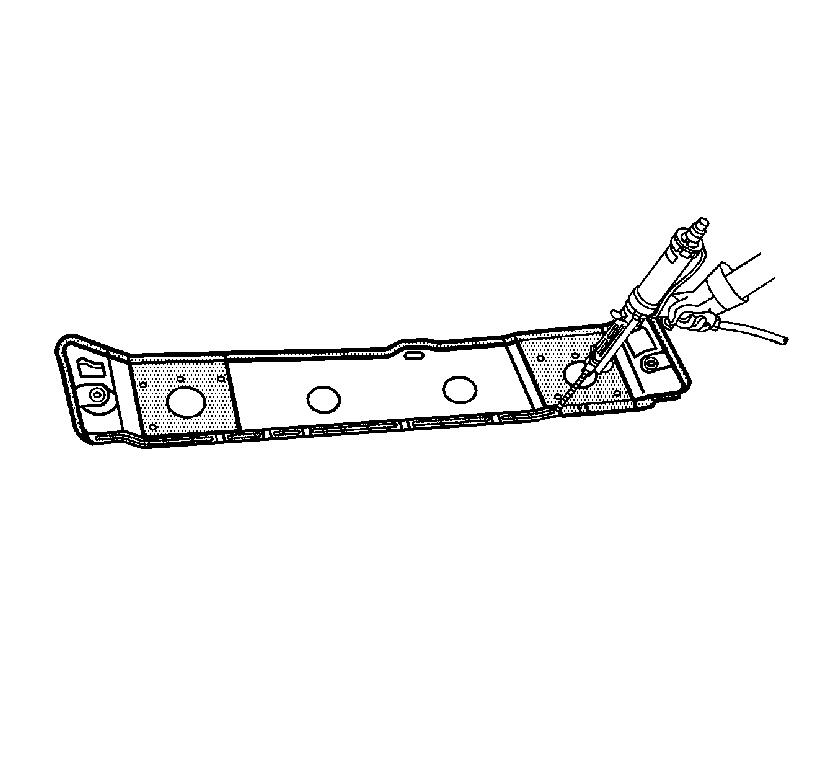
Important: The adhesive has a 40-50 minute working time. Do not allow the adhesive to totally cure off the vehicle, as proper alignment of the rear end panel to the body will be difficult.

Important: DO NOT pull the panels apart after being joined together. Slide the panels against each other to realign the panels.
